When Lin Jing-jie (林靖傑) turned his lens on novelist Wang Wen-hsing (王文興) for a documentary project, he felt like a novice standing before a martial arts master. He tried to enlist help from other authors in tackling the star of the film, but most “declined the offer with an awed look on their faces,” Lin said.
Those reactions are understandable. Wang, now 72, has earned a reputation as Taiwan’s most abstruse modernist author, despite the fact he has only two major works to his name: Family Catastrophe (家變), which was published in 1973 and is regarded as subversive and groundbreaking in content and form, and the two-volume Backed Against the Sea (背海的人), which was published 25 years later.
The Man Behind the Book (尋找背海的人), Lin’s film about Wang, is part of a six-film series titled The Inspired Island: Series of Eminent Writers From Taiwan (他們在島嶼寫作—文學大師系列電影), for which five directors documented the lives and work of six literary figures, including poets Yu Kuang-chung (余光中), Yang Mu (楊牧), Chou Meng-tieh (周夢蝶) and Cheng Chou-yu (鄭愁予), as well as female writer Lin Hai-yin (林海音).
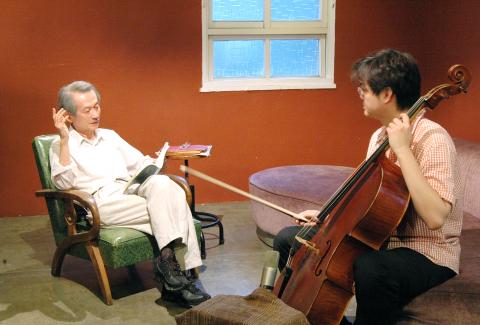
Photo courtesy of Fisfisa
The ambitious project was born of a fire in 2008 that engulfed much of Cloud Gate Dance Theatre’s (雲門舞集) studio in Bali (八里) District, New Taipei City. The blaze prompted Pegatron Corp (和碩) chairman Tung Tsu-hsien (童子賢) to take action to preserve Taiwan’s artistic heritage. Two years of negotiations and more than NT$15 million in funding later, some of Taiwan’s most celebrated literary figures were immortalized on film.
As most of the authors were driving forces in the poetry movement that flourished between 1950 and 1970, the films offer a window into an exciting age in Taiwanese literature. The zeitgeist of the era is reflected through personal histories and anecdotes, and the documentaries serve as references and footnotes to one another, synergistically building up the bigger picture.
In The Man Behind the Book, Lin Jing-jie uses animation and theatrical performances to bring to life Wang’s novels and probe the author’s tempestuous inner world. The documentary, which is easily accessible to those who may not know anything about the author, includes interviews and commentary from young writers.
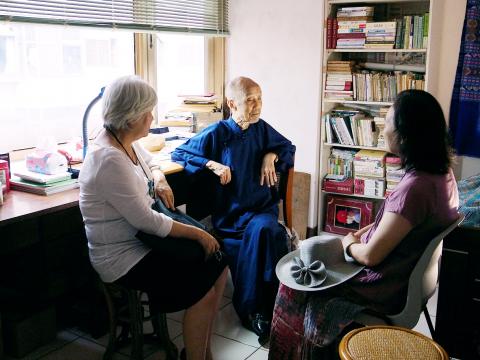
Photo courtesy of Fisfisa
Images of the novelist writing in his cell-like study reveal why Wang produces only 35 characters a day. He lashes out violently on pieces of paper with a pen as if he were sculpting words, not writing them.
It’s telling that the film only shows Wang performing a reenactment of writing in his study; the purist says he can’t work with even the slightest interruption — in this case, a small digital camera on a tripod.
“I held myself in check a little to be photogenic. The reality is 10 times more violent than what you see in the film,” Wang told the audience at a question-and-answer session held after the film’s premiere earlier this month. “I write this way exactly because I can’t write, not even one word, but feel even worse if I don’t write anything at all.”
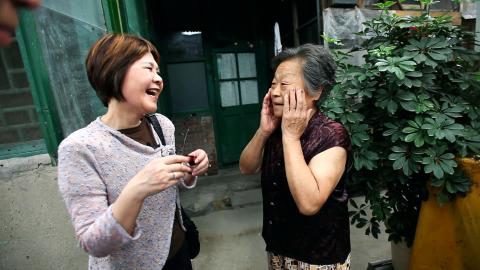
Photo courtesy of Fisfisa
The affable relationship between Lin Jing-jie and Wang is the subject of envy for veteran filmmaker Chen Huai-en (陳懷恩), who spent
a year and half documenting Yu, but was
unable to observe the poet in an up-close and personal manner.
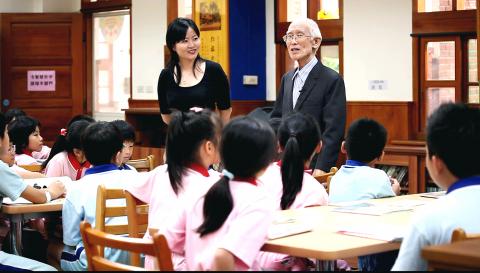
Photo courtesy of Fisfisa
“At his age [82], Yu focuses his energy on his works and cares less about the outside world ... He thought making a documentary would be like an interview that could be done in a day. Most of the time, he would say, ‘Okay, I think that is enough for the day,’” Chen explained.
The fact that Yu is a widely studied poet with more than 50 titles to his name heightened Chen’s anxiety. But the resulting documentary, The Untrammeled Traveler (逍遙遊), presents a refreshing take on the influential figure, who is portrayed as a traveler who longs for home.
For Home in Two Cities (兩地), filmmaker Yang Li-chou (楊力州) faced an even more difficult task as his subject, Lin Hai-yin, passed away in 2001.
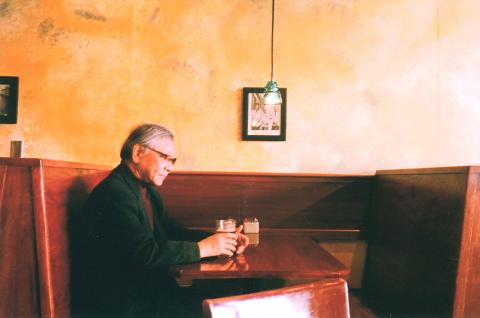
Photo courtesy of Fisfisa
Noted for his narrative-driven documentaries, the director delivers an emotion-packed rendering of the writer and publisher as a doting mother figure who nourished a younger generation of writers and artists including Cloud Gate founder Lin Hwai-min (林懷民) and nativist literature figure Huang Chun-ming (黃春明).
The rest of the series is composed of Wen Chih-i’s (溫知儀) Towards the Completion of a Poem (朝向ㄧ首詩的完成) on poet Yang Mu, Chen Chuan-hsing’s (陳傳興) lyrical Port of Mists (如霧起時), which examines the life of poet Cheng Chou-yu, and The Coming of Tulku (化城再來人), the first biographical documentary on the 90-year-old Chou Meng-tieh.
The series is currently showing at The Ambassador Theatre (國賓影城) at the Spring Center (長春廣場), 176 Changchun Rd, Taipei City (台北市長春路176號). It runs through May 6. Screenings are mostly in Mandarin with Chinese subtitles. For more information, go to fisfisa.pixnet.net/blog.
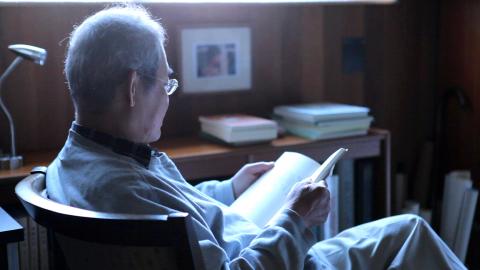
Photo courtesy of Fisfisa

April 14 to April 20 In March 1947, Sising Katadrepan urged the government to drop the “high mountain people” (高山族) designation for Indigenous Taiwanese and refer to them as “Taiwan people” (台灣族). He considered the term derogatory, arguing that it made them sound like animals. The Taiwan Provincial Government agreed to stop using the term, stating that Indigenous Taiwanese suffered all sorts of discrimination and oppression under the Japanese and were forced to live in the mountains as outsiders to society. Now, under the new regime, they would be seen as equals, thus they should be henceforth

Last week, the the National Immigration Agency (NIA) told the legislature that more than 10,000 naturalized Taiwanese citizens from the People’s Republic of China (PRC) risked having their citizenship revoked if they failed to provide proof that they had renounced their Chinese household registration within the next three months. Renunciation is required under the Act Governing Relations Between the People of the Taiwan Area and the Mainland Area (臺灣地區與大陸地區人民關係條例), as amended in 2004, though it was only a legal requirement after 2000. Prior to that, it had been only an administrative requirement since the Nationality Act (國籍法) was established in

With over 100 works on display, this is Louise Bourgeois’ first solo show in Taiwan. Visitors are invited to traverse her world of love and hate, vengeance and acceptance, trauma and reconciliation. Dominating the entrance, the nine-foot-tall Crouching Spider (2003) greets visitors. The creature looms behind the glass facade, symbolic protector and gatekeeper to the intimate journey ahead. Bourgeois, best known for her giant spider sculptures, is one of the most influential artist of the twentieth century. Blending vulnerability and defiance through themes of sexuality, trauma and identity, her work reshaped the landscape of contemporary art with fearless honesty. “People are influenced by

The remains of this Japanese-era trail designed to protect the camphor industry make for a scenic day-hike, a fascinating overnight hike or a challenging multi-day adventure Maolin District (茂林) in Kaohsiung is well known for beautiful roadside scenery, waterfalls, the annual butterfly migration and indigenous culture. A lesser known but worthwhile destination here lies along the very top of the valley: the Liugui Security Path (六龜警備道). This relic of the Japanese era once isolated the Maolin valley from the outside world but now serves to draw tourists in. The path originally ran for about 50km, but not all of this trail is still easily walkable. The nicest section for a simple day hike is the heavily trafficked southern section above Maolin and Wanshan (萬山) villages. Remains of